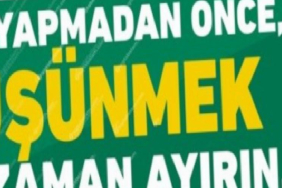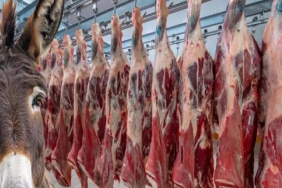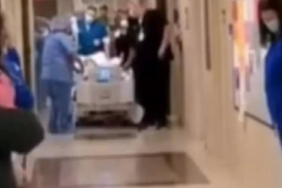Donors With Hepatitis B Surface Antigen Positivity
H. Asuman Yavuza,
*, S. Tekinb
, Y. Yukselc
, I. Ates ̧
d
, L. Yucetine
, M. Demirf
, B. Uygung
, M. Tuncerh
,
and A. Demirbasc
a
Department of Nephrology and Renal Transplantation, Atakent Education and Research Hospital, Acıbadem University, _
Istanbul,
Turkey; b
Department of General Surgery and Transplantation Unit, Medical Park Hospital, Kemerburgaz University, Antalya, Turkey; c
Department of General Surgery and Transplantation Unit, Medical Park Hospital, Antalya, Turkey; d
Department of Cardiology, Medline
BSK Lara Hospital, Antalya, Turkey; e
Organ Transplantation Coordination Unit Medical Park Hospital, Antalya, Turkey; f
Department of
Biochemistry, Medical Park Hospital, Antalya, Turkey; g
Department of Clinical Microbiology and Infectious Disease, Medical Park
Hospital, Antalya, Turkey; and h
Department of Nephrology, Medical Park Hospital, Kemerburgaz University, Antalya, Turkey
ABSTRACT
Objective. There is a still controversy among transplantation centers regarding accep-
tance of hepatitis B surface antigen (HBsAg)epositive donors for renal transplantation.
However, some reports show that these donors can be used under a special protocol. In this
study, we compared the clinical and biochemical parameters of patients who received
kidneys from HBsAg-positive (group 1) versus other living-related kidney donors (group 2).
Materials and Methods. We retrospectively analyzed the outcomes of 2168 living-related
renal transplantations performed between December 2008 and April 2014 at Medical Park
Hospital Transplantation Center, Antalya, Turkey. One hundred eleven donors were
HbsAg-positive (group 1), and 2057 donors were HbsAg-negative (group 2). Group 1
kidney transplantations were undertaken only if the recipient displayed a hepatitis B
antibody titer >10 mIU/mL and donor hepatitis B virus DNA was negative.
Results. Demographic characteristics; 1-, 2- and 4-year serum creatinine levels; glomerular
filtration rates; and liver function test results were similar between the two groups. There
were no new hepatitis B virus infections throughout the study period. Acute rejection
rates (26/111 in group 1 vs 375/2168 in group 2; P 1⁄4 .887), graft loss (4/111 in group 1 vs
123/2168 in group 2; P 1⁄4 .546), and patient loss (6/111 in group 1 vs 102/2168; P 1⁄4 .132)
were similar between the two groups.
Conclusion. Our study showed that hepatitis B surface antigen positivity was not a
contraindication to living-kidney donation.
ALTHOUGH the number of cadaveric organ donors
remains relatively stable, the number of patients
awaiting transplantation continues to increase, creating a
shortage of donor organs [1]. To create a solution, there is
interest in transplanting organs formerly considered marginal
or undesirable (older donors, hemodynamically unstable
donors, noneheart-beating donors, and donors with markers
of prior hepatitis B virus [HBV] infection) [2e6]. Whereas
hepatitis B surface antigen (HBsAg) positivity has been
considered to be an absolute contraindication to living-kidney
donation, some studies have suggested that kidneys can be
used in selected recipients without significantly effecting graft
or patient outcomes. In this study we compared clinical and
biochemical parameters of patients who received kidneys
from HbsAg-positive living donors (group 1) with other re-
cipients of kidneys of HbsAg-negative donors (group 2).
PATIENTS AND METHODS
The study included 939 female (36 in group 1 and 903 in group 2)
and 1229 male (75 in group 1 and 1154 in group 2) recipients of
*Address correspondence to Prof. Dr H. Asuman Yavuz,
Acıbadem Atakent Research and Education Hospital, Halkalı
Mah., Altınsehir Cad. Kucukcekmece, Istanbul, Turkey. E-mail:
asuman.yavuz@gmail.com
0041-1345/15
http://dx.doi.org/10.1016/j.transproceed.2015.04.014
a 2015 by Elsevier Inc. All rights reserved.
360 Park Avenue South, New York, NY 10010-1710
1312 Transplantation Proceedings, 47, 1312e1314 (2015)
living-related kidney transplantations performed between 2008
and 2013. Group 1 kidney transplantation required recipients’
hepatitis B surface antibody (anti-HBs) titer to be 10 mIU/mL
and donor HBV DNA to be negative. Recipients whose anti-HBs
was <10 mIU/mL were vaccinated to reach a titer of 10 mIU/mL.
We did not use hepatitis B hyper immunoglobulin (HIBG) or
lamivudine.
HBsAg and HBsAb were investigated using chemiluminescence
microparticle immunoassay at 3-month intervals. At 3-months in-
tervals, HBV DNA was investigated with real-time polymerase chain
reactions (QIAGEN GamhH D 40724 Hilden, Germany). Human
leukocyte antigen (HLA) A, B, and DR antigens were analyzed with
polymerase chain reaction (OLERUP, SSP, Stockholm, Sweden).
Alanine aminotransferase (ALT), aspartate aminotransferase
(AST), serum creatinine, and serum albumin levels were measured
by an autoanalyzer using standard methods. Although there are
some measurement limitations, ALT or AST levels that were greater
than 2-fold to olağan value on at least three measurements were
accepted as an indicator of liver disease. Glomerular filtration rates
were estimated using Cockroft-Gault formula.
Statistical Analysis
IBMM SPSS statistics 19 package (IBM SPSS, Chicago, Ill,
United States) was used for veri analysis. All results were given
as mean values standard deviations. The unpaired Student t
test was used to analyze continuous values and categorical ones
were compared using the c2 test. A P < .05 was accepted as
statistically significant.
RESULTS
Mean donor and recipient ages; gender; HLA mismatches;
1-, 2-, 3-, and 4-year serum creatinine levels; glomerular
filtration rates; and liver function test results were similar
between the two groups (Tables 1 and 2). Immunosup-
pressive protocols were also similar between the two groups.
There were no cases of de novo HBV infection throughout
the study period. There were also no new instances of active
liver disease. Acute rejection rates (26/111 in group 1 and
375/2168 in group 2; P 1⁄4 .887), graft loss (4/111 in group 1
and 123/2168 in group 2; P 1⁄4 .546), and patient loss (6/111
in group 1 and 201/2168 in group 2; P 1⁄4 .132) were similar
between the two groups (Table 1). Our study has showed
that HBsAg-positive living donation was not a contraindi-
cation for kidney transplantation.
DISCUSSION
Turkey is a country with intermediate endemicity for
hepatitis B, and approximately 4.6% of the population
are HBsAg positive [7], meaning that 4.6% of potential
living donors are HBsAg positive. We intended to use
this population to increase kidney transplantation rates
since 2008. Our preliminary veri were first published in
2012 with successful results; the article consists of an
extended number of patient veri, and long-term results
of patients.
We used neither HBIG nor lamivudine, only trans-
planting kidneys from HBsAg-positive donors to natural
or vaccine-induced antieHBsAb-positive recipients. There
was no active liver disease throughout the study period.
Sumethkul et al [4] also did not use HBIG or lamivudine
for recipients whose antibody titer ranged from 10e100
mIU/mL. Their results showed good 10-year survival rates
of kidney transplantations from HBsAg-positive donors to
anti-HBs antibodyepositive recipients. There was no
associated active liver disease. Thus, presence of HBsAg
positivity in donors should not be considered exclusion
criteria for kidney donation to anti-HBs Abepositive
recipients.
REFERENCES
[1] Diaz JM, Guirado L, Facundo C, et al. Assessment of the
living donor. Analysis of extra-renal pathology as a limitation for
donation. Nefrologia 2005;25(2):51e6.
[2] Berber I, Aydın C, Yigit B, et al. The effect of HBsAg pos-
itivity of kidney donors on long term patient and graft outcome.
Transplant Proc 2005;37(10):4173e5.
Table 1. Demographic and Clinical Characteristics
Parameters
Transplant From
Hepatitis B Positive
Donors (n 1⁄4 111)
Other Living-related
Kidney Transplants
(n 1⁄4 2168) P
Recipient age (y) 43.08 11.3 44 11.8 .213
Donor age (y) 49.12 11.3 46.45 9.21 .256
HLA mismatch 3.5 0.3 3.7 1.2 .312
Gender (F/M) 36/75 903/1154 .543
Acute rejection 26/111 375/2168 .887
Serum creatinine
(mg/dL)
1-y 1.24 0.12 1.32 0.22 .779
2-y 1.36 0.35 1.25 0.43 .654
3-y 1.26 0.47 1.43 0.64 .215
4-y 1.41 0.41 1.53 0.72 .164
Graft loss 4/111 123/2168 .546
Patient loss 6/111 102/2168 .132
Table 2. Liver Function Tests
Parameters Group 1 Group 2 P
Preoperative
ALT 16.15 8.87 17.53 8.98 .213
AST 14.52 9.32 18.32 21.9 .256
1st yr
ALT 24.87 43.01 26.41 34.03 .312
AST 26.76 71 29.43 65.49 .543
2nd yr
ALT 25.32 12.21 26.02 11.52 .887
AST 26.23 9.43 27.32 9.37 .779
3rd yr
ALT 28.21 11 29.31 12.56 .654
AST 27.11 11.2 28.21 7.34 .215
4th yr
ALT 28.44 14.4 29.65 4.76 .164
AST 29.32 45.7 27.75 28.65 .546
Abbreviations: ALT, alanine aminotransferase; AST, aspartate aminotransferase.
DONORS WITH HEPATITIS B 1313
[3] Wei HK, LoonaCC, King KL, et al.HBsAg (þ) donor as a kidney
transplantation deceased donor. Transplant Proc 2008;40(7):2097e9.
[4] Sumethkul V, Ingsathit A, Jırasiritham S. Ten-year follow-up
of kidney transplantation from hepatitis B surface antigen-positive
donors. Transplant Proc 2009;41(1):213e5.
[5] Jiang H, Wu J, Zhang X, et al. Kidney transplantation from
hepatitis B surface antigen positive donors into hepatitis B sur-
face antibody positive recipients: a prospective nonrandomized
controlled study from a single center. Am J Transplant 2009;9(8):
1853e8.
[6] Tuncer M, Tekin S, Yucetin L, et al. Hepatitis B surface
antigen positivity is not a contraindication for living kidney dona-
tion. Transplant Proc 2012;44(6):1628e9.
[7] Ay P, Torunoglu MA, Com S, et al. Trends of hepatitis
B notification rates in Turkey, 1990 to 2012. Euro














